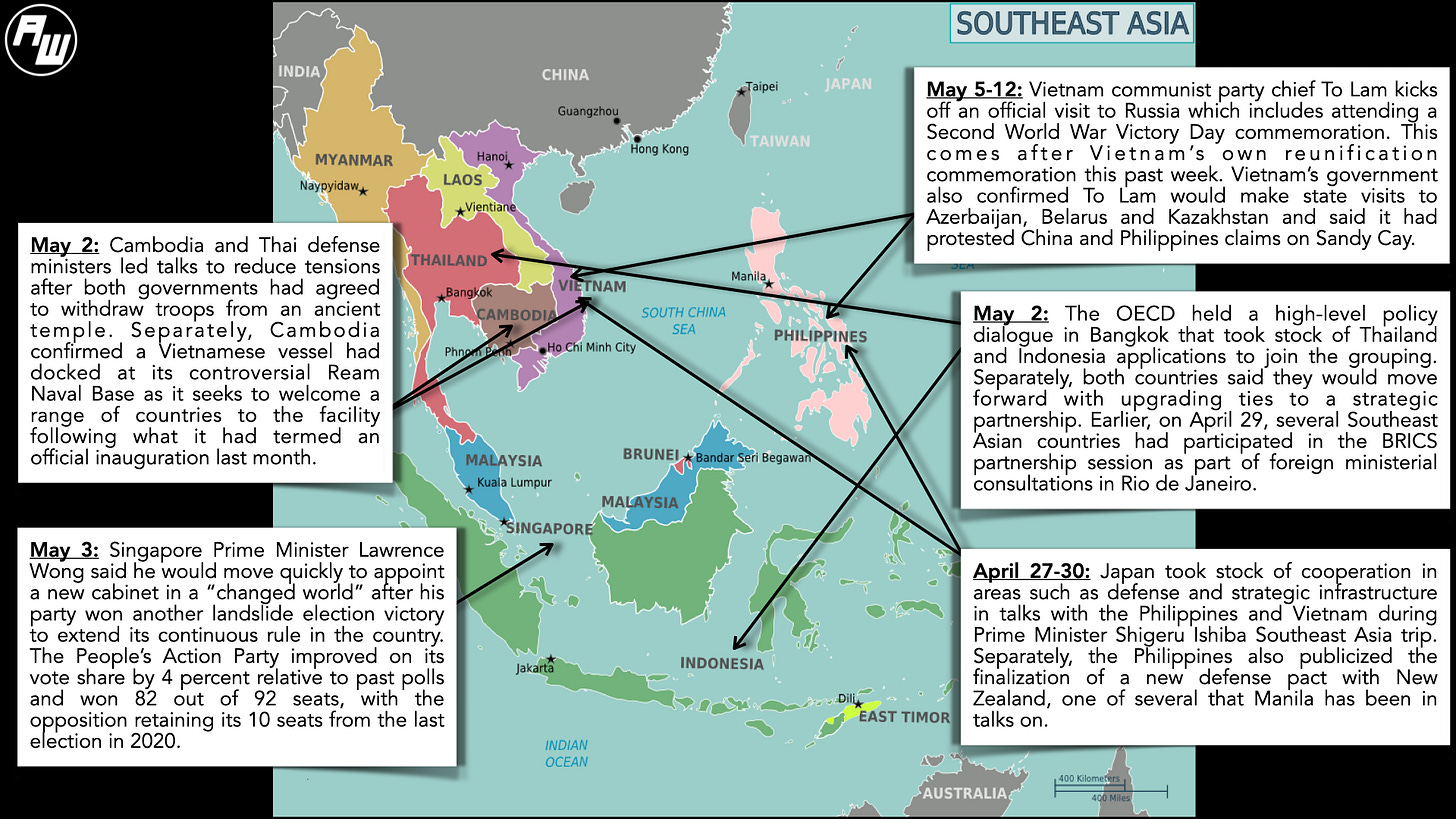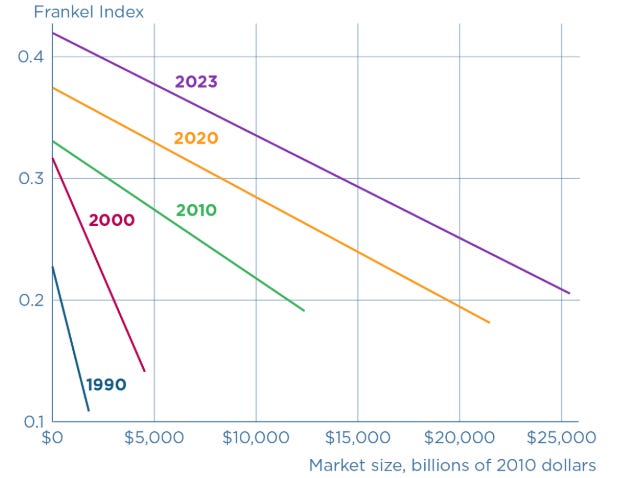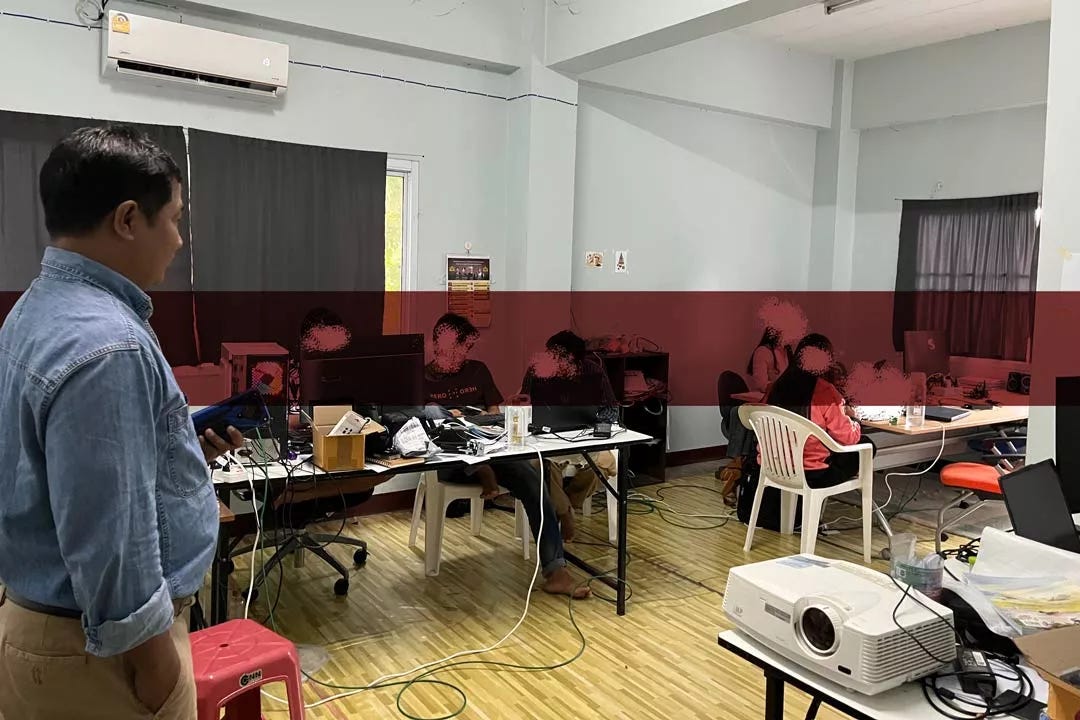Japan Unveils Coming Southeast Asia Inroads in Twin Summits
Plus BRICS-OECD split screen; coming disinformation force; quiet sanctions; big cross-border infrastructure boost; new sectoral bill talk and much, much more.
Greetings to new readers and welcome all to the latest edition of the weekly ASEAN Wonk BulletBrief! If you haven’t already, you can upgrade to a paid subscription for $5 a month/$50 a year below to receive full posts by inserting your email address and then selecting an annual or monthly option. You can visit this page for more on pricing for institutions, groups as well as discounts. For current paid subscribers, please make sure you’re hitting the “view entire message” prompt if it comes up at the end of a post to see the full version.
For this iteration of ASEAN Wonk BulletBrief, we are looking at:
Assessing the geopolitical and geoeconomic significance of Japan’s coming Southeast Asia inroads following two summits;
Mapping of regional developments, including BRICS-OECD split screen; new naval base controversy visit and post-election gameplan;
Charting evolving geopolitical, geoeconomic and security trends such as new disinformation force; quiet sanctions and big cross-border infra boost;
Tracking and analysis of industry developments and quantitative indicators including economic security watch; arms race fears; coming new bill & more;
And much more! ICYMI, check out ASEAN Wonk’s review of a new book on China’s coercion calculus and implications for future flashpoint management;
This Week’s WonkCount: 2,237 words (~10 minutes)
BRICS-OECD Split Screen; New Naval Base Controversy Visit & More

Trade Futures; Media Battlefield & Global South Tech Landscape
"It remains to be seen whether Trump’s aggressive tariff agenda changes this pattern," notes a commentary published by the Peterson Institute for International Economics that examines global trends on globalization and economic connectivity across low-, middle- and high-income countries. The piece argues that the increasing pace of globalization across income groups has been accompanied by an “explosion” in trade restrictions worldwide such that they outpaced liberalization measures by a ratio of 3 to 1 (topping out at over 3,000 annually in 2024) (link).
Globalization Degree and Market Size Growth for Middle- and Low-Income Countries (1990-2023)
“For all the difficulties they face, none of the exiled editors or journalists I spoke with see laying down their pens as an option,” concludes the International Crisis Group in an on-the-ground investigation into the ongoing challenges confronted by independent media outlets exiled from Myanmar, which are estimated to number around 60 by one count with more than 1,500 journalists in their ranks. The investigation includes stories from individual publications and staff members (link).
“Over the coming decades, the Global South will play an increasingly critical role in the use, adoption, and development of advanced technologies,” argues a new report by the Atlantic Council on U.S.-China technology competition in the Global South. The report notes the importance of tailoring technology solutions to individual country needs as well as leveraging strategic partnerships to enhance on-the-ground impact (link).
China Tech Projects By Region & Commitment Year
Japan Unveils Coming Southeast Asia Inroads in Twin Summits
What’s Behind It
Japan announced new commitments in Southeast Asia during Prime Minister Shigeru Ishiba’s trip to the Philippines and Vietnam. Ishiba’s trip came during an active week for both countries. Beyond continued verbal sparring with China over Sandy Cay, Manila also inked a new defense pact with New Zealand and publicized just the latest example of a minilateral maritime activity with Australia and the United States during its ongoing Balikatan exercises1. Meanwhile, Vietnam communist party chief To Lam kicked off a trip to Russia and Central Asia after the country’s reunification commemoration activities on April 30 which consumed Ho Chi Minh city as ASEAN Wonk witnessed firsthand2. A Vietnamese vessel also docked in Cambodia’s Ream Naval Base after Phnom Penh’s inauguration of the facility last month3.
Select Key Recent Geoeconomic and Geopolitical Developments in Southeast Asia
The development was closely watched within the current geopolitical landscape despite it being just the latest manifestation of Japan’s longtime regional role. While China President Xi Jinping’s recent Southeast Asia tour spotlighted Beijing’s regional inroads, Japan active regional diplomacy has continued apace. Malaysia Prime Minister Anwar Ibrahim publicized a phone call with Ishiba just after welcoming Xi as the country was grappling with the U.S. tariff fallout and fending off perceptions that it is leaning closer to China4. In mainland Southeast Asia, while Cambodian officials admit privately to a rhetoric-reality gap in the country’s diversification narrative, Japan has offered a rare exception optics-wise as evidenced by Tokyo being first in line to dock at Ream5. Despite this, Japanese officials also aware that trends like the rise of Global South discontent and the presence of a greater variety of actors in Southeast Asia — including those from the Middle East — require adjustment on messaging in areas like principles and values, in addition to calibrating its position as a U.S. treaty ally. Adjusting to these new “diversification dynamics,” as one official put it to ASEAN Wonk, is often easier said than done in an already diverse region.
Why It Matters
The new initiatives and developments also pointed to datapoints to watch in the future across key domains amid evolving regional and global dynamics (see two originally generated ASEAN Wonk tables below on notable areas to monitor and additional specifics. Paying subscribers can read on for more on what to expect and future implications in the rest of the “Why It Matters” and “Where It’s Headed” sections, along with paid-only sections of the newsletter as usual).











